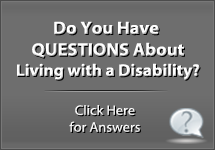
The advances in the treatment and understanding of Post Traumatic Stress Disorder have come a long way since the condition was officially recognized in 1980. Many health care professionals recognized the effects of experiencing or witnessing extreme traumatic events for many years, but until the US Government officially recognized the condition there were very few funds available for research and the development of effective treatments.
Today, PTSD is a known mental disorder like depression or anxiety. Thanks to organizations such as the Department of Veterans Affairs’ National Centre for PTSD, the condition can now be correctly diagnosed and treated with both medication and counseling.
While the research has been driven by the plight of servicemen and women returning from active duty wars, the condition is in no way limited to military personnel. It can be triggered by traumatic events experienced in civilian life as well, such as auto accidents, violent confrontations, and even natural disasters like earthquakes.
PTSD Symptoms
PTSD affects each person differently; sufferers usually exhibit more than one of the following symptoms:
- Flashbacks and dreams of the event,
- Indifference and detachment,
- Low attention span,
- Problems in relationships and aversion to personal attachment,
- Short term memory problems,
- Insomnia,
- Anger,
- Hyper-vigilance,
- Self- destructive tendencies, and
- Alcoholism.
PTSD Treatment Options
The treatment of Post Traumatic Stress Disorder usually takes the form of medication and counseling. Modern counseling techniques are very effective. Cognitive Behavioral Therapy (CBT) is accepted as the most effective counseling method and the two types often used for PTSD are Cognitive Therapy and Exposure Therapy.
Cognitive Therapy attempts to change a sufferer’s outlook on their current situation by helping to assuage any feelings of guilt they may have in relation to whatever is causing their stressful condition. Exposure Therapy, on the other hand, tries to help a sufferer face the memories of the triggering event itself and little by little desensitize them from the pain of that memory.
The medication side of PTSD treatment relies heavily on anti-depressants known as Selective Serotonin Reuptake Inhibitors (SSRI). These work on the chemical imbalances of serotonin in the brain that make the sufferer feel depressed.
Two common types of prescription medication that are often used in PTSD treatment are Fluexetine and Sertraline.
Depending on the level of severity of the PTSD and whether or not it is combines with other mental problems, treatment can last between 3 moths and two years. The great news, however, is that there is a very good success rate in treating this condition.
For those who suffer from PTSD to such an extent that maintaining any job becomes impossible, there is possible help through the US Government’s Social Security Disability Program. Although the criteria which must be met to show you have PTSD at the listing level is very strict, it is now possible to receive disability benefits for this medical impairment. For those who are held completely within the grip of PTSD, and severely limited in their ability to function, disability payments allow breathing room so patients can focus on overcoming their problem.
If you suffer from PTSD then understand this: never put post traumatic stress on the back burner. In an era where so much progress has been made, it is unnecessary for you to suffer in silence. Help is available for your condition, and if you so limited by your PTSD that you cannot work then you may even be able to qualify for a monthly disability payment.










